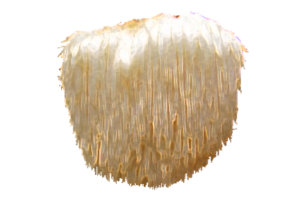Kam-Fai Lee, Jiann-Hwa Chen, Chih-Chuan Teng, Chien-Heng Shen, Meng-Chiao Hsieh, Chien-Chang Lu, Ko-Chao Lee, Li-Ya Lee, Wan-Ping Chen, Chin-Chu Chen, Wen-Shih Huang, and Hsing-Chun Kuo
Abstract
Hericium erinaceus, an edible mushroom, has been demonstrated to potentiate the effects of numerous biological activities. The aim of this study was to investigate whether H. erinaceus mycelium could act as an anti-inflammatory agent to bring about neuroprotection using a model of global ischemic stroke and the mechanisms involved. Rats were treated with H. erinaceus mycelium and its isolated diterpenoid derivative, erinacine A, after ischemia reperfusion brain injuries caused by the occlusion of the two common carotid arteries. The production of inflammatory cytokines in serum and the infracted volume of the brain were measured. The proteins from the stroke animal model (SAM) were evaluated to determine the effect of H. erinaceus mycelium. H. erinaceus mycelium reduced the total infarcted volumes by 22% and 44% at a concentration of 50 and 300 mg/kg, respectively, compared to the SAM group. The levels of acute inflammatory cytokines, including interleukin-1β, interleukin-6 and tumor necrosis factor á, were all reduced by erinacine A. Levels of nitrotyrosine-containing proteins, phosphorylation of p38 MAPK and CCAAT enhancer-binding protein (C/EBP) and homologous protein (CHOP) expression were attenuated by erinacine A. Moreover, the modulation of ischemia injury factors present in the SAM model by erinacine A seemed to result in the suppression of reactive nitrogen species and the downregulation of inducible NO synthase (iNOS), p38 MAPK and CHOP. These findings confirm the nerve-growth properties of Hericium erinaceus mycelium, which include the prevention of ischemic injury to neurons; this protective effect seems to be involved in the in vivo activity of iNOS, p38 MAPK and CHOP.
Conclusions
In conclusion, H. erinaceus offers neuroprotective effects after ischemic brain injury and has the ability to scavenge free radicals, this being related to endoplasmic reticulum stress signaling. It also inhibits inflammation by reducing the induction of iNOS and the production of nitrotyrosine. It does this via inactivation of p38/MAPK and reduction of the protein levels of CHOP. Taken together, our findings provide further insights into the mechanisms by which H. erinaceus exerts its beneficial effect on the injured brain (Figure 7). Finally, these findings suggest that erinacine A may be a promising agent that helps bring about neuroprotection and thus may reduce ischemic brain damage.

